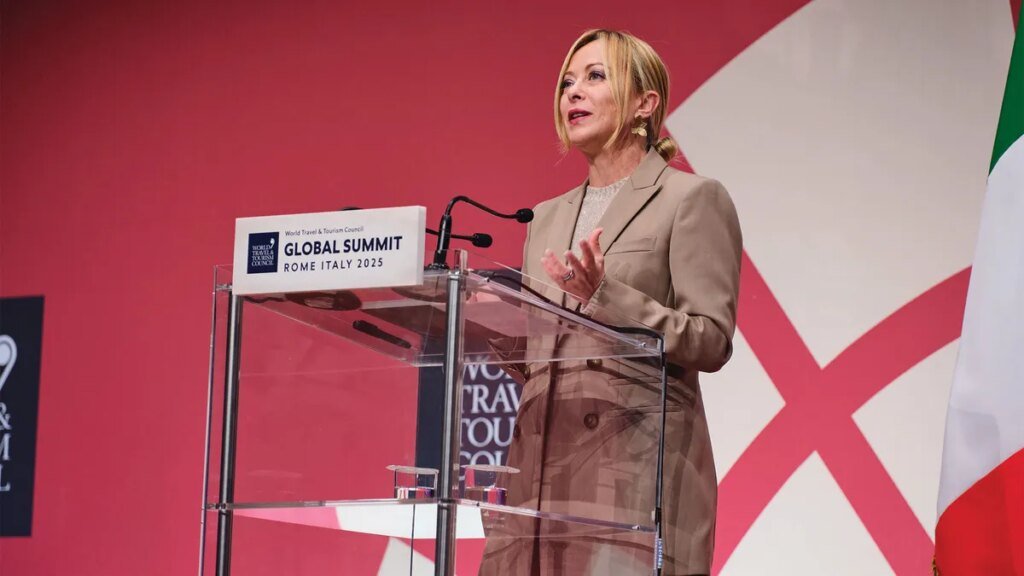ROME — Despite ongoing global conflicts and geopolitical changes, the travel industry is not only enduring but flourishing, as emphasized by leaders at the World Travel & Tourism Council Global Summit this week. The primary challenge to continued growth appears to be a significant shortfall in workforce supply.
According to a recent report from the WTTC, in the next decade, the global travel and tourism sector will require an additional 43 million workers—a stunning 16% shortfall. The hospitality industry alone is projected to face a gap of 8.6 million workers by 2035, equating to an 18% deficit in necessary staffing levels.
Gloria Guevara, interim CEO of the WTTC, stressed the need to recognize broader demographic and structural shifts affecting labor markets globally. She pointed out that many workers left the industry during the COVID-19 pandemic and have not returned as unemployment rates decrease and working-age populations dwindle. “This is creating an increased pressure on labor supply, especially for fast-growing sectors like travel and tourism,” Guevara remarked. The WTTC aims to collaborate with government officials worldwide to devise policies aimed at closing this workforce gap.
The Demand for Labor in Travel and Tourism
The travel and tourism industry shows a particularly high demand for low-skilled roles, critical to its operation, with a projected need for over 20 million additional workers. Positions requiring human interaction and services that are less likely to be automated also remain highly sought after. The most substantial labor shortages are predicted to occur in major economies, notably China (16.9 million), India (11 million), and the European Union (6.4 million).
Despite these workforce challenges, Guevara noted that the travel sector is “booming” and will not pause for geopolitical stability. “With so much activity globally—conflicts and shifting priorities—travel and tourism are thriving. This growth is evident across regions such as the Americas, the Middle East, Africa, and Europe,” she stated. The predicted economic contribution of tourism this year exceeds $11 trillion, which represents more than 10% of global GDP. If travel and tourism were considered a nation, it would rank as the third largest worldwide.
Potential Impact on U.S. Tourism
However, the WTTC’s Economic Impact Research report also indicates that international visitor spending in the United States could decline by $12.5 billion by 2025. The WTTC has cautioned that without strategic destination promotion, traveler-friendly policies, and lowered visa costs, the U.S. risks losing its competitive edge in the global tourism market.
Understanding Undertourism
Interestingly, while Europe saw over half of the world’s 1.5 billion travelers in 2024, a phenomenon known as “undertourism” has also emerged. Concerns about excessive tourism persist, but some industry leaders argue that the problem lies not in overtourism but in an uneven distribution of visitors. Italian Prime Minister Giorgia Meloni highlighted that Italy, ranked as the fifth most-visited country, requires better dispersal of its 58 million annual visitors.
Daniela Santanche, Italy’s Minister of Tourism, stated plainly that 96% of the country experiences “undertourism,” an assertion echoed by Francesco Cacciapuoti, Chief Sales Officer for Trenitalia. He noted that 75% of international tourists tend to focus on just 4% of Italy, primarily its major cities.
Strategies for Balanced Tourism
Elie Maalouf, CEO of IHG Hotels & Resorts, stressed that this challenge extends beyond Italy. He called for more even distribution of tourists in other countries like Spain and France, claiming that this would alleviate the burdens associated with overtourism. “The real issue is a maldistribution of tourism rather than overtourism,” he said.
WTTC’s newly appointed chairman, Manfredi Lefebvre, also weighed in, suggesting that cruise ships could play a crucial role in spreading travelers across less-visited areas, unlike other types of tourism that exacerbate housing shortages in densely populated cities.
As the travel industry continues to grow, addressing workforce shortages and promoting equitable tourism distribution across regions will be vital for ensuring sustainable development in this vibrant sector.



